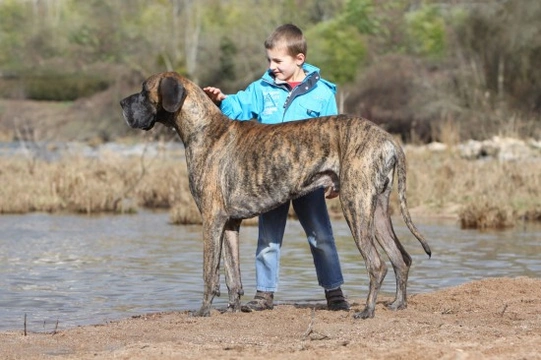Pets
Pets for studWanted petsBreedersAccessories & services
Knowledge hub
Support
Support & safety portal
Stopping Larger Dogs from Jumping up at you
Jumping up at people for attention is a habit that many dogs get into when they are young, as even if you know that the behaviour is undesirable, puppies and younger dogs tend to be given a lot more leeway, and jumping up when small does not usually pose an immediate problem!
It is all too easy to fall into this trap when your dog is young, but as they get older, you are likely to begin to find it annoying, as well as potentially dangerous, not to mention messy! Dirty paw prints all over your clothes when you are just about to head off for work doesn’t create the best start to the day, after all.
While you can often physically push down a smaller dog or manoeuvre them away from jumping up at you, with larger dogs, this can turn into a tussle that your dog might view as a game, reinforcing this undesirable behaviour. If your larger dog is prone to jumping up at you in greeting or in excitement, you will probably have to tackle things rather differently.
In this article, we will give you some tips on how to do this.
Start as you mean to go on
The easiest way to deal with a problem is to stop it from developing in the first place! Train your dog or puppy from the time that you very first get them that jumping up is not desirable and not allowed, just as you will begin to teach them the basics of other aspects of training.
Make sure that other people don’t sabotage your best efforts either; if your dog is young, friendly or very appealing, you may find that people you meet out and about will be keen to meet your dog and say hello, and their open arms and encouraging words may well seem like an open invite to your dog to jump up. This can make it hard to keep your dog from jumping up due to receiving mixed signals from you and the other party, but continue to be consistent, and let the other person know that your dog is not allowed to jump up at them.
Don’t enable jumping up
When your dog jumps up at you, they are looking for a feedback of information as a reward, in this case, getting your attention. If using clear commands such as “no” or “down” don’t seem to register with your dog, do not respond to them at all; avoid eye contact, and do not touch them until they get down.
When they are back on all four paws, reward them with praise, and revert back to ignoring them if they jump up again.
Don’t use your hands
Dogs respond to body language just as much as they do to verbal commands, and you are giving signals to your dog all the time simply by the way that you move and what you are doing with your hands.
It is instinctive to push your dog down when they are leaping at you, or to use your hands to fend them off if they are particularly excited! However this too provides a positive feedback reward to your dog, and lets them know that they have got your attention.
Bring your arms in close to your chest and fold them, to prevent you from waving them at your dog and ensure that you are not signalling a response to your dog’s bad behaviour.
Back off
One of the times when your dog is most likely to jump up at you is when you first get home, in excitement and greeting. If the ignoring and arms folded method doesn’t work to moderate your dog’s behaviour, you will need to remove another response reward from them too; your presence in the room.
This means that you might need to go back out again, wait a moment for your dog to calm down, and come back in; repeating the procedure until your dog gets the hang of the fact that jumping up means you won’t be there.
It can take a while for your dogs to get to grips with the logistics of all of this, but it is worth pursuing it!
Divert with commands
If your dog is responsive and well trained in general, other than their propensity to jump up, you might find that if you give an alternative command when they are jumping up, they will automatically respond to it without giving it much thought.
Try using the command for “sit” when your dog is jumping up rather than “no” or “down,” and if this garners the appropriate response, work with this to reinforce that command as a diversion from jumping up.
Rope in some friends
Once you have begun to get your dog to reliably stop jumping up at you and to get down when told to, the next challenge is teaching your dog that jumping up at other people is not allowed either! Before you take your chances with the general public and risk bowling over a small child who simply wanted to say hello, get some friends who are knowledgeable with dogs and willing to help to offer themselves up as practice guinea pigs.
Set your friend up with a pocket full of treats to reward good behaviour, and teach them about the appropriate responses to display if your dog jumps up. They can then administer the treats when your dog stays on the ground or gets down when told to, reinforcing in your dog’s mind that not jumping up is the way to earn attention and a reward.



